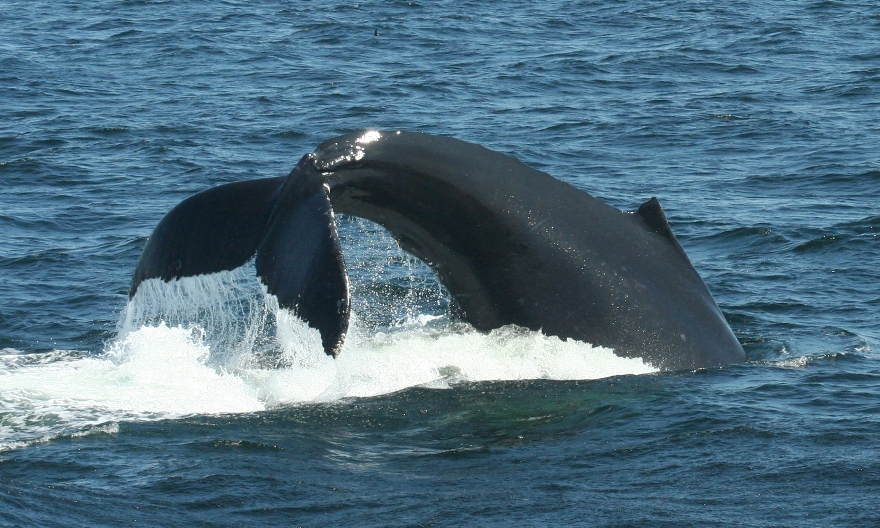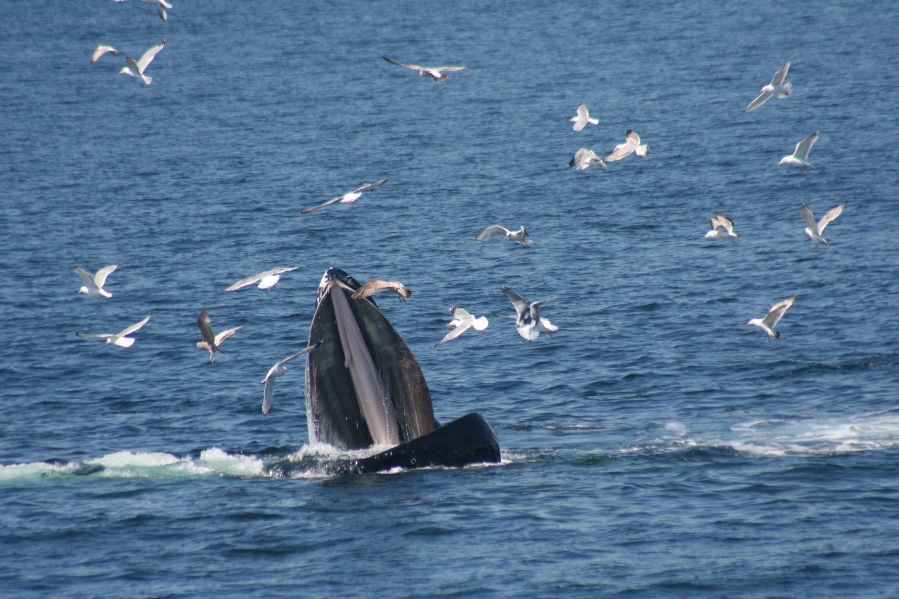Humpback Whales Learn Hunting Technique from Peers

Evidence is mounting that several animals can learn behaviors from their peers, and pass down these traditions from generation to generation — an ability once thought to be uniquely human.
The latest study to document social learning in animals, published today (April 25) in the journal Science, has found that humpback whales learned a new feeding technique from other humpbacks, a trait that stuck around and spread throughout the population.
In 1980, a whale in the Gulf of Maine (off the coast of New England) was first seen slapping its tail on the surface of the ocean before feeding on a type of fish called sand lance. This behavior soon spread and was passed down over several generations. It's now a commonplace behavior in humpbacks throughout the region, said Jenny Allen, a study co-author and researcher at the University of St. Andrews in Scotland.
27 years of data
It is difficult, of course, to prove that a certain behavior is learned socially, especially when it comes to marine animals. But the researchers behind the study developed a powerful computer model that allowed them to compare the likelihood that this behavior arose via social interaction versus individual learning.
Drawing upon a database of 27 years of observations of whale foraging, the model returned a result that, at a bare minimum, the humpbacks were 1 million times more likely to have learned the feeding technique from peers than to have each learned it individually.
"It was so big my supervisor made me run it again because he thought I might have messed it up somehow," Allen told LiveScience. "It was so startling to have that strong a result."
Sign up for the Live Science daily newsletter now
Get the world’s most fascinating discoveries delivered straight to your inbox.
The whales perform this behavior, slapping their mammoth tales on the surface one to four times, just before diving and bombarding their prey with bubbles, which helps to organize them into schools upon which the whales can more easily feed, Allen said. The purpose of the technique, called lobtail feeding, is unclear, but it's possible it helps organize the fish into tighter formations before mealtime, she added.
Learning from peers
Whales learn the technique from other whales that they tend to spend a lot of time with, the study found. Importantly, the humpback whales didn't appear to learn the technique from their mothers, said Jooke Robbins, a senior scientist at the Provincetown Center for Coastal Studies in Provincetown, Mass., who wasn't involved in the study. That makes it easier to conclude that the behavior is socially learned, as opposed to genetically preprogrammed.

Humpbacks have somewhat loose social structures compared to other whales; youngsters separate from their mothers after two years and don't usually interact with them much after that, Allen said. "They have associations that are kind of weak and flexible but even in that situation you can have information that's transmitted in a social context," Robbins said.
This is the first quantitative proof that whales can socially learn a new feeding behavior, Allen said. But it's hardly the first evidence of cultural transmission in whales: Humpbacks have been shown to learn songs from one another, and sperm whales and other cetaceans speak in different dialects that can be described as traditions, Allen said. [Video: Humpback Whales Sing Their Tunes]
These whales, in other words, have multiple traditions. And they likely have other socially learned behaviors and cultural quirks. "The reason we were able to identify this is because it’s a 50-foot whale waving its tail at you. But there are probably many other subtle behaviors that aren't as obvious and easy to record," that are also culturally transmitted, Allen said.
Scientists have also found abundant evidence for social learning and cultural transmission in a variety of primates. Another study published today in Science found that wild vervet monkeys can copy their neighbors' feeding habits, learning to eat what "local" monkeys in new areas are eating.
Email Douglas Main or follow him @Douglas_Main. Follow us @livescience, Facebook or Google+. Article originally on LiveScience.com.










